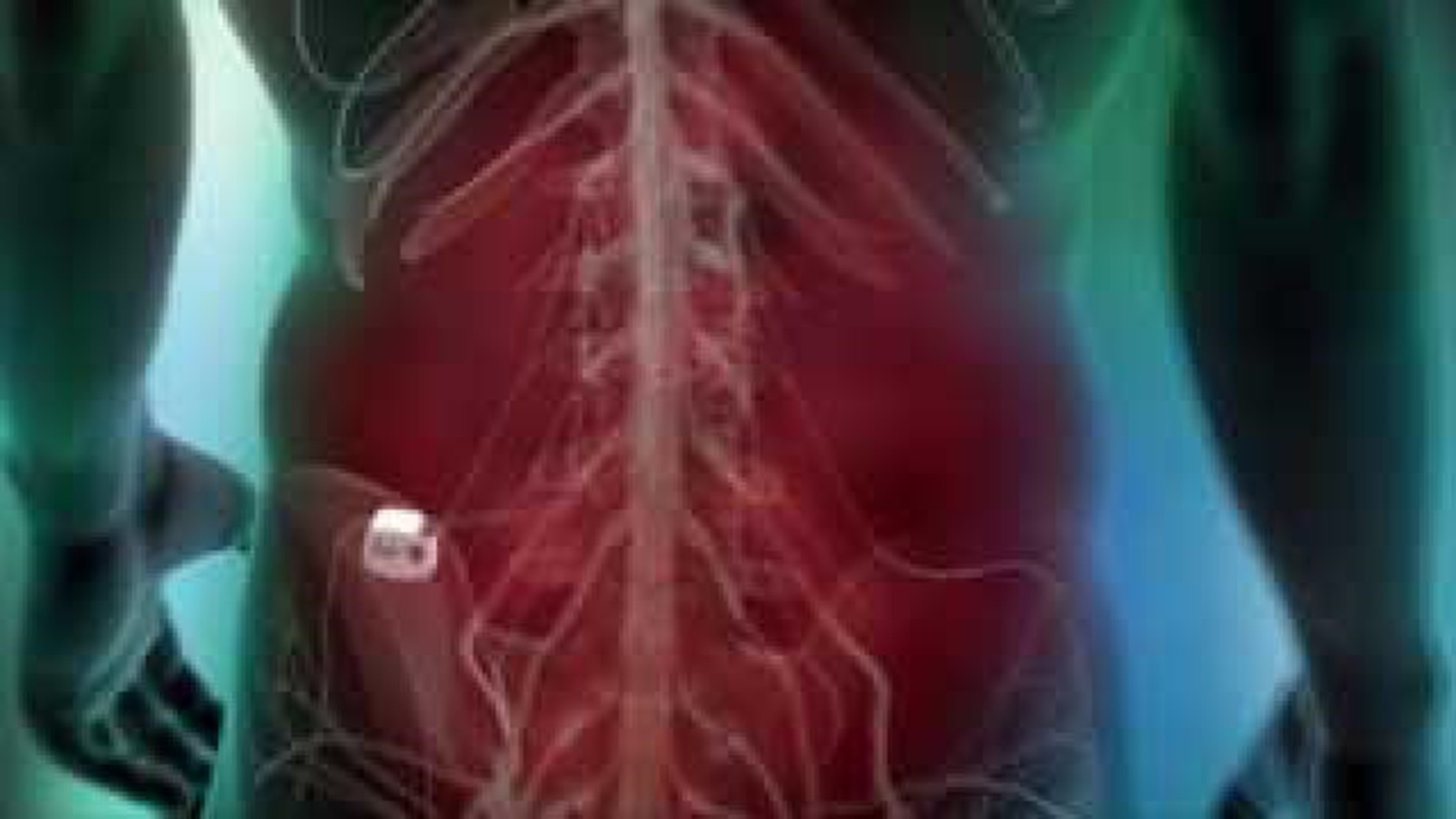33-year-old Bradley Pryzant of Honesdale is an 11-year veteran of the Pennsylvania Army National Guard, and has been deployed overseas twice, once in Iraq and once in Afghanistan. He stopped by WNEP to talk about an injury he says roughed him up during his last deployment.
"It's very rugged terrain in Afghanistan, riding around. It could have been a mild hit but it was some sort of blunt force trauma," said Brad.
When he came home in 2008, Brad was in pain. Testing eventually revealed a herniated disc, and a few years later he opted to undergo back surgery.
"I have two bars in my back, from T2 to T11. So that's 9 discs, completely straight down," he told us.
But according to Pain Management Specialist Dr. Dean Mozeleski, the surgery didn't take away the pain for long, and neither did physical therapy nor pain medication.
"When there's nothing left to try, sometimes this can be a lifesaver for them," said Dr. Mozeleski, from Northeastern Rehabilitation in Scranton.
He's talking about a neuro-stimulator, a spinal cord stimulator implanted right into a patient. The company that makes the device used in Brad is called St. Jude Medical.
"It doesn't make the problem disappear," Dr. Mozeleski admitted. "But it does mask the pain. And it can do that so well that people can get back to work, get off medications, enjoy life, pick up their grandchildren," he said.
After a trial phase to make sure it would be effective, the device is then surgically implanted. It was Dr. Brett Schlifka, a neurosurgeon at Geisinger Medical Center near Danville, who implanted Brad's.
"The device sends out impulses that block the pain gate, so the perception of pain is reduced," explained Dr. Schlifka.
It's battery operated. With proper charging, it'll last 8-to-10 years, after which he'll need a replacement. He charges himself once a week by wrapping a sensor around his chest and plugging in for a few hours. He can also control how much or how little pain relief he needs.
"You can adjust it, and go on with your day," he said.
It's a time commitment for sure, but according to one of Brad's doctors, it's well worth the effort.
"He's done quite well. he reports about 95% of pain relief at this point," Dr. Schlifka said.

